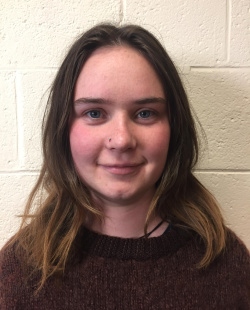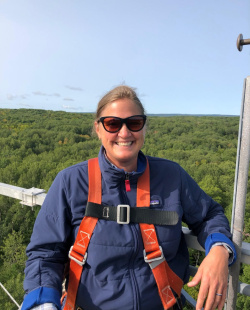
Effects of warming on montane ecosystems
Working Group Goal
The primary goal of this working group is to better understand the relative effects of climate warming and shifts in species abundances on montane ecosystems. 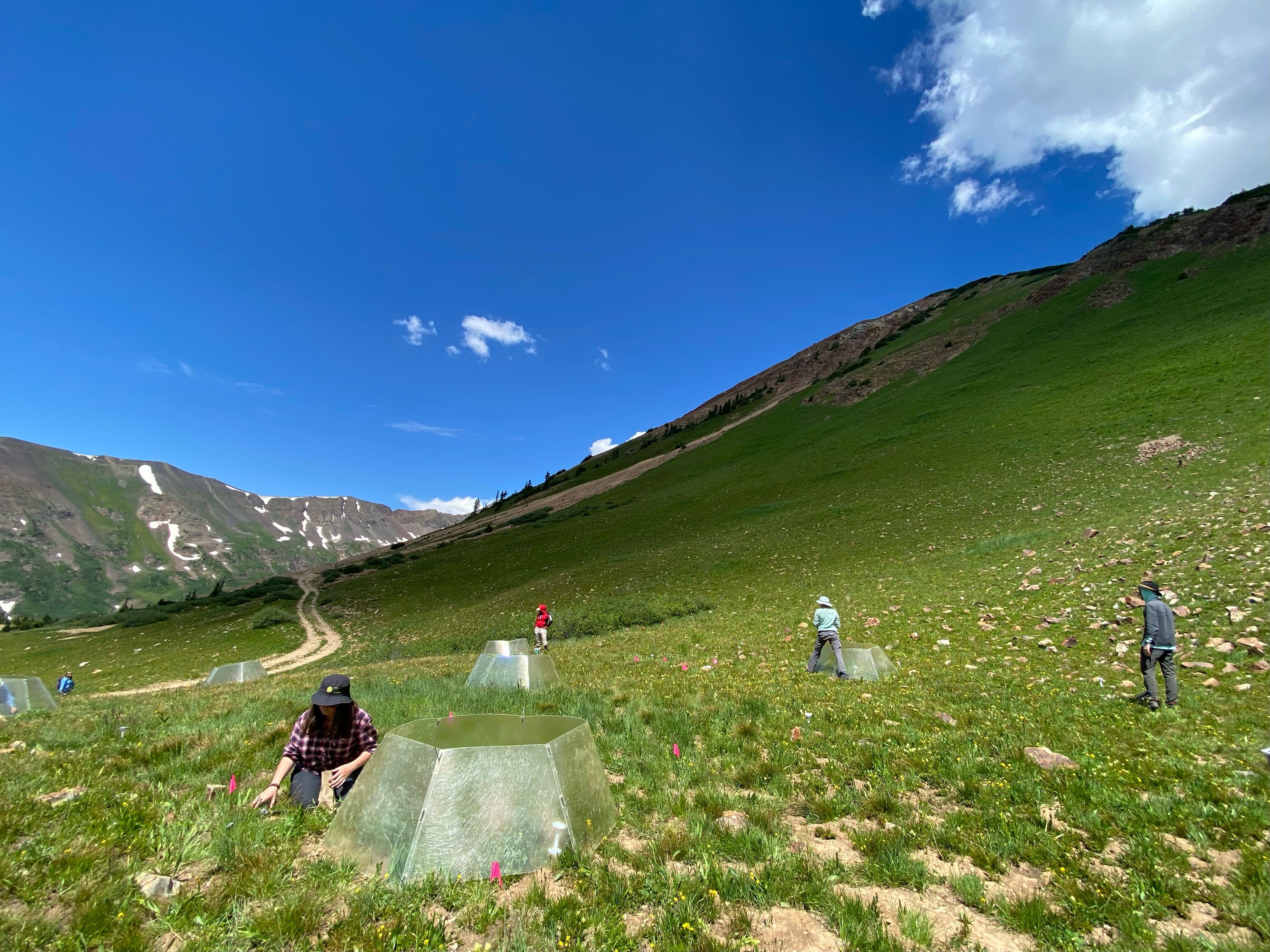 This project is based at the Rocky Mountains Biological Laboratory, where warming x dominant species removal experiments were established at two elevations in 2013. These experiments are part of the WaRM project, a network of similar experiments in mountains across the world.
This project is based at the Rocky Mountains Biological Laboratory, where warming x dominant species removal experiments were established at two elevations in 2013. These experiments are part of the WaRM project, a network of similar experiments in mountains across the world.
Ongoing Research
We are interested in how warming and removal of the dominant species affect ecosystem function. We collect both aboveground and belowground data each summer, including plant community composition, ecosystem C fluxes (Fig. 1), plant physiology, decomposition rates, plant and soil chemistry, soil respiration and NDVI. 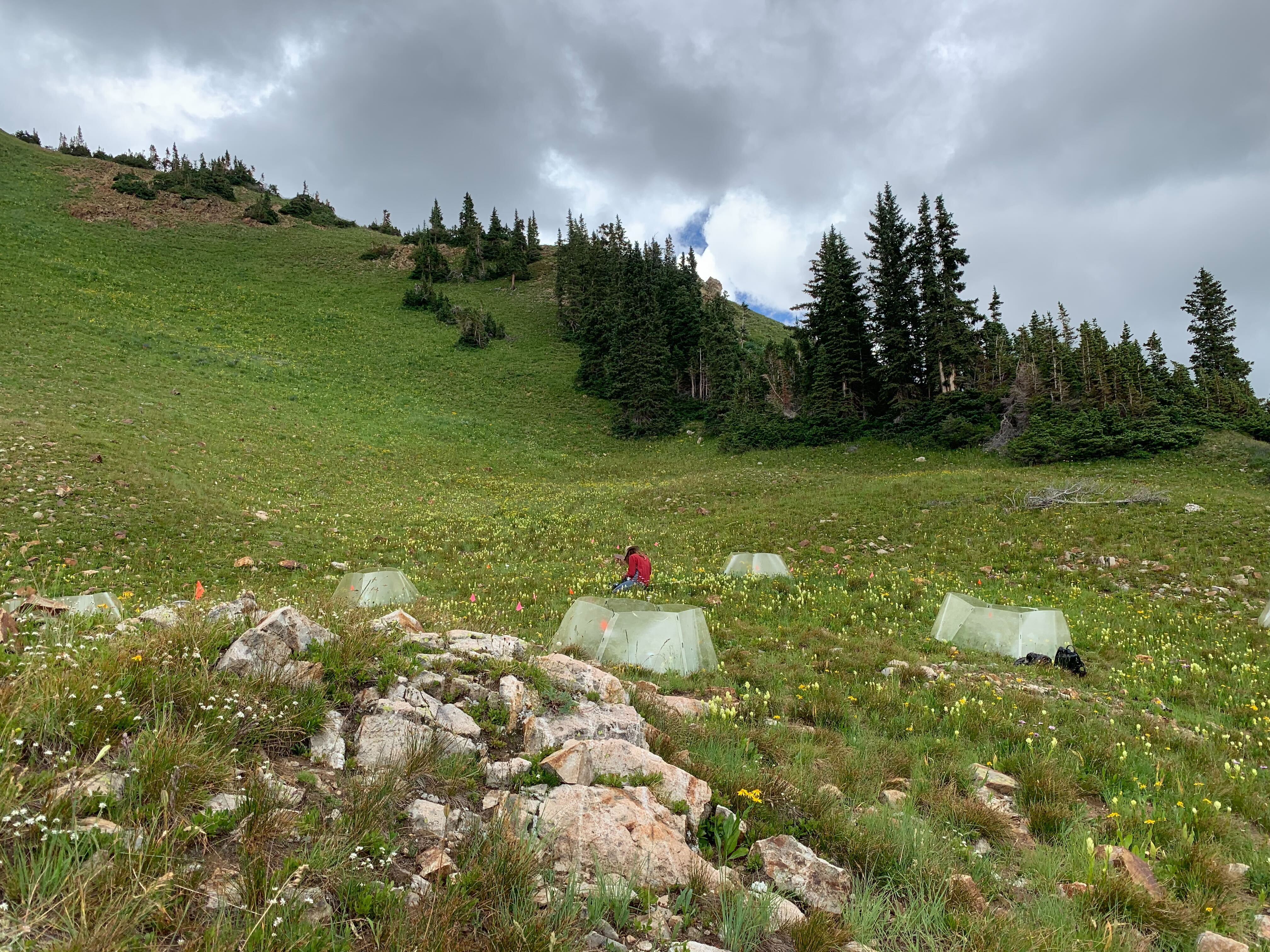 We are interested in how the treatments act both separately and together to affect these ecosystem processes, and how and why these responses vary within and between years.
We are interested in how the treatments act both separately and together to affect these ecosystem processes, and how and why these responses vary within and between years. 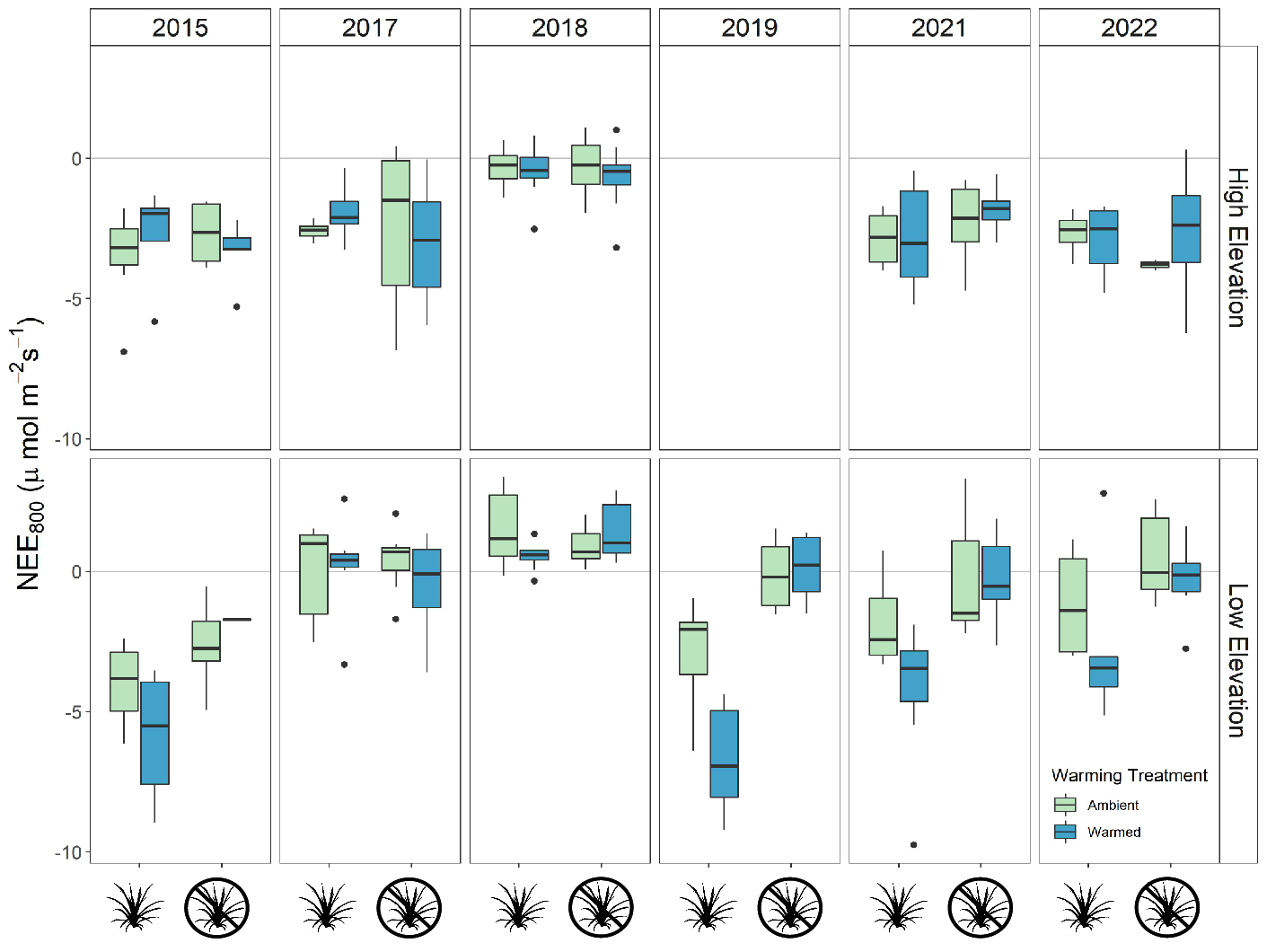 We also synthesise data from this experiment and others in the network to identify global trends, with the goal of improving our ability to predict how alpine ecosystems will respond to global change.
We also synthesise data from this experiment and others in the network to identify global trends, with the goal of improving our ability to predict how alpine ecosystems will respond to global change.
Figure 1. Net ecosystem C exchange at PAR 800 μmol m-2 s-1 (NEE800) under each combination of warming and removal treatment, at the low and high elevation sites. The plain plant symbols represent the control treatment (dominant present), and the plant symbols covered by crosses represent the removal treatment (dominant species removed). Points below the horizontal grey line at 0 represent a net C sink, and those above represent a net C source. The box comprises the first to the third quartile, the horizontal line through the box is the median and the bars below and above the box are the minimum and maximum values. Outliers are represented by black dots. The high elevation site was covered by snow in 2019.
Researchers Involved:
